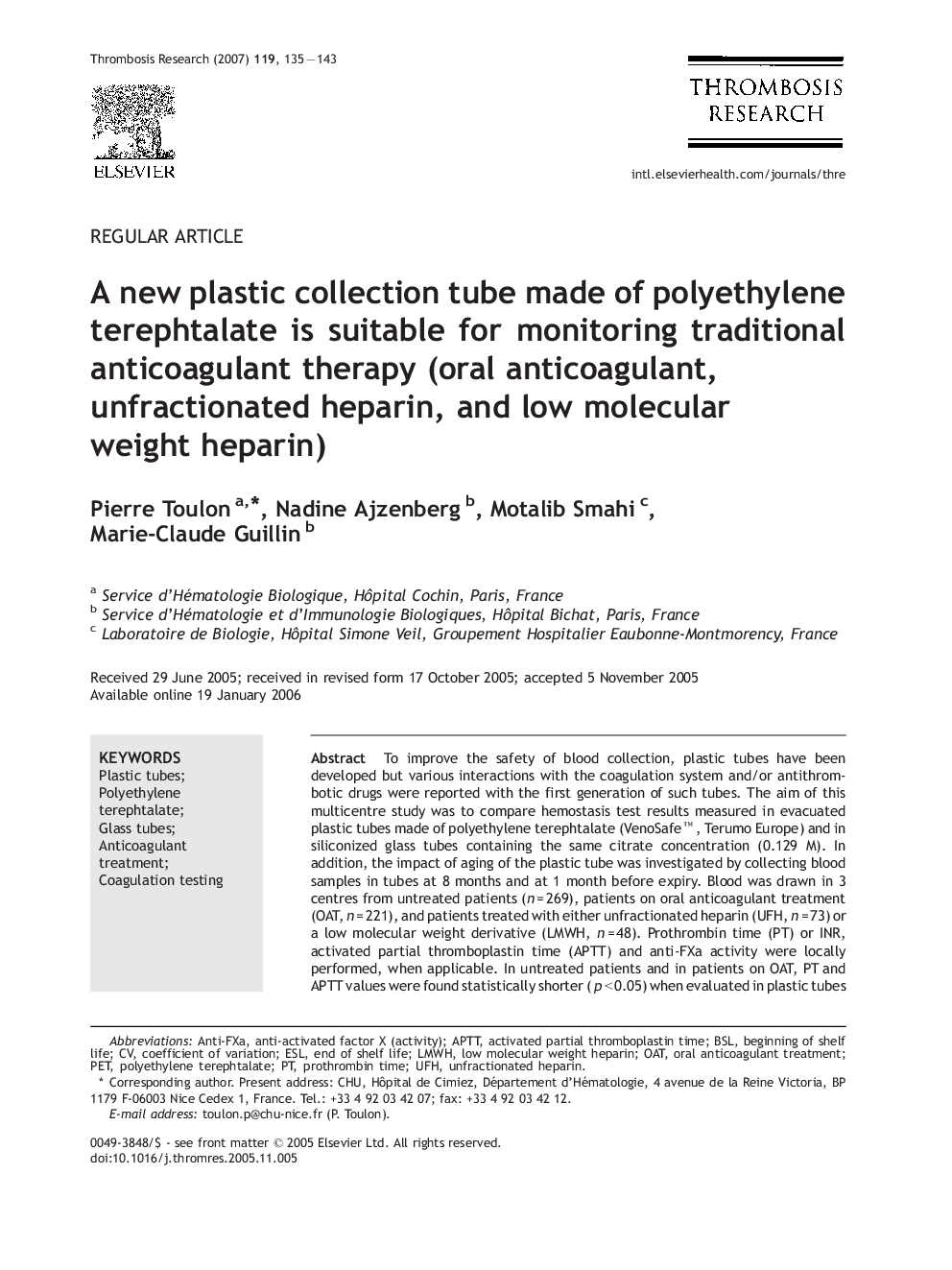| Article ID | Journal | Published Year | Pages | File Type |
|---|---|---|---|---|
| 3030227 | Thrombosis Research | 2007 | 9 Pages |
To improve the safety of blood collection, plastic tubes have been developed but various interactions with the coagulation system and/or antithrombotic drugs were reported with the first generation of such tubes. The aim of this multicentre study was to compare hemostasis test results measured in evacuated plastic tubes made of polyethylene terephtalate (VenoSafe™, Terumo Europe) and in siliconized glass tubes containing the same citrate concentration (0.129 M). In addition, the impact of aging of the plastic tube was investigated by collecting blood samples in tubes at 8 months and at 1 month before expiry. Blood was drawn in 3 centres from untreated patients (n = 269), patients on oral anticoagulant treatment (OAT, n = 221), and patients treated with either unfractionated heparin (UFH, n = 73) or a low molecular weight derivative (LMWH, n = 48). Prothrombin time (PT) or INR, activated partial thromboplastin time (APTT) and anti-FXa activity were locally performed, when applicable. In untreated patients and in patients on OAT, PT and APTT values were found statistically shorter (p < 0.05) when evaluated in plastic tubes than in glass tubes, except when PT was evaluated using a human thromboplastin. Surprisingly, significantly longer APTT and higher anti-FXa activities were obtained when blood from patients on UFH was drawn in plastic than in glass tubes. However, none of the differences had any clinical relevance (Bland–Altman analysis). In patients on anticoagulant treatment, there was no effect of aging of the plastic tubes. These results suggest that the plastic tube VenoSafe™ is suitable for coagulation testing both in untreated subjects and more interestingly in patients on traditional anticoagulant therapy during the whole shelf life indicated by the manufacturer.
